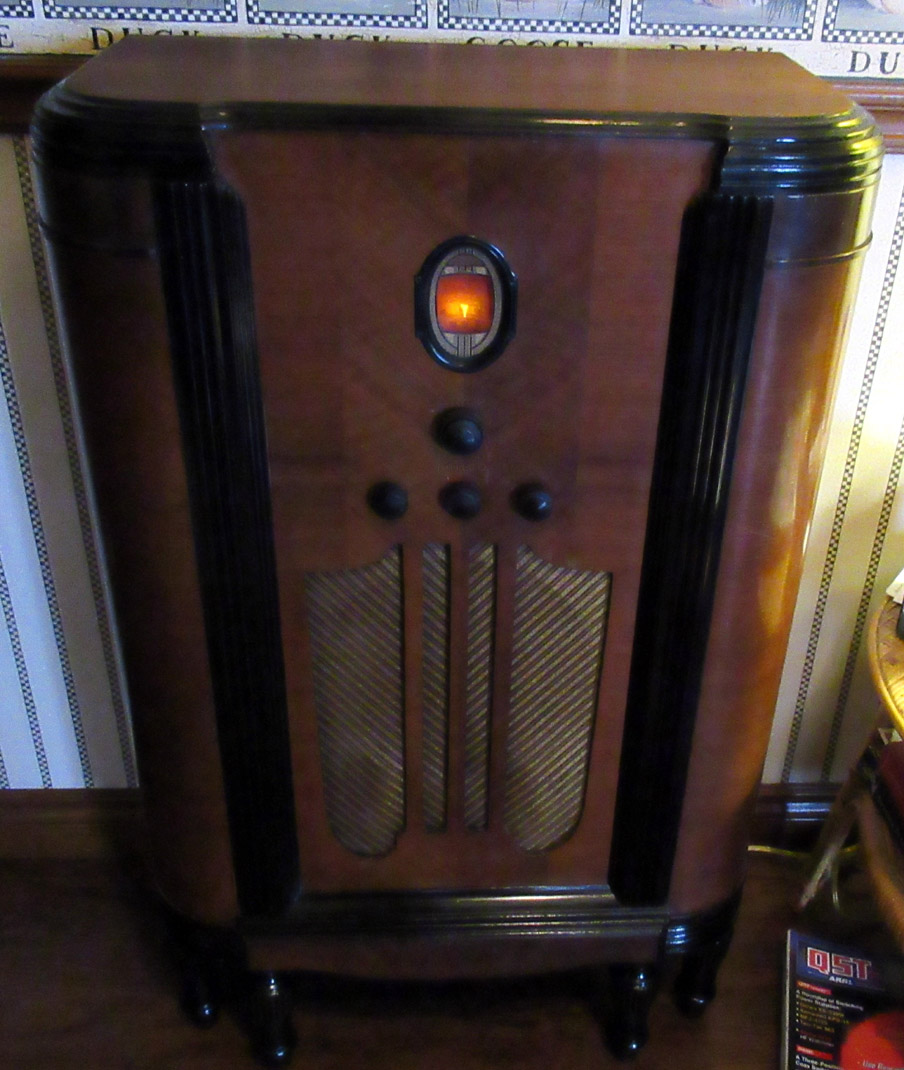Posts: 5
Threads: 1
Joined: Mar 2019
City: AILSA CRAIG
State, Province, Country: ONTARIO CANADA
I am a complete novice restoring a Philco 3650. The top needed refinishing (lacquer had lifted in places, there were water marks and other blemishes) and so I have sanded it down to bare wood using a variety of papers ending with #400 steel wool and then #400 paper). Now, I have always thought that when you swiped a wet cloth over the natural stained wood you would see pretty well the appearance one would get after applying lacquer or urethane. Problem is that, while wetting the wood brings it up exactly like it was before sanding, applying a wee bit of urethane on a small spot does not produce anywhere near the desired finish. I have not done this with lacquer yet-might it make a difference?. But I am wondering what I am missing here-perhaps I need to apply a light coat of stain?
BTW, can anyone tell me what type of wood this cabinet top might be? It certainly would help to know this if I need to apply some stain.
Willy
Posts: 5,216
Threads: 275
Joined: Nov 2012
City: Wilsonville
State, Province, Country: OR
Welcome to the Phorum!

I believe you have a Canadian model that would be equivalent to the US model 650B (assuming you have the table top version). See:
http://philcoradio.com/library/index.php...ex-canada/
A good picture of a 650B can be found in the Philco Gallery:
http://philcoradio.com/gallery2/1936a/#Model_650B
Almost everyone on this phorum would say never use urethane to finish these radios. It it terribly hard to remove if an error is made and when time to refinish again. Lacquer is easily stripped and redone and is the product that was originally used on these sets.
Some photos would help see what you are dealing with. Usually I strip the old finish off and only lightly sand if needed. There are a number of threads with folks describing their techniques in the phorum. The top is probably a walnut veneer but others may know for sure. Some sets had a cheaper white wood in some places that was covered in
lacquer toners (or the pigment
version of the toners). Stains were generally not used. A number of coats of clear gloss lacquer is then used to finish. That's just a quick overview.
Posts: 5
Threads: 1
Joined: Mar 2019
City: AILSA CRAIG
State, Province, Country: ONTARIO CANADA
Thanks for your reply, Bob. This radio is a floor model. I have successfully removed the small spot of urethane which I applied and am now ready to try either toner or stain. As it is almost impossible to obtain toner in Canada I will go with the stain followed by sprayed on Watco satin lacquer ( a couple of local wood finishers recommended satin lacquer over semi-gloss). Knowing that the wood is quite possibly walnut helps but it is not veneer but solid 3/4" wood. I will try to locate a piece of walnut on which to experiment. I tried unsuccessfully to attach three pix of the radio.
Bill
Posts: 4,946
Threads: 54
Joined: Sep 2008
City: Sandwick, BC, CA
Try Mohawk paints, they do trade inside Canada, and do manufacture shading lacquers. Their website will probably tell you which dealers are nearest you. As for satin verses semi gloss, I would go with semi gloss, or gloss preferably, satin gets damaged too easily, but some refinishers like it because it covers up flaws so they don't have to do as much prep work.
Regards
Arran
(This post was last modified: 03-04-2019, 06:42 AM by
Arran.)
Posts: 365
Threads: 76
Joined: Oct 2014
City: Winter Haven, FL
My opinion (I do 3-4 radios a month). Others may disagree.
I would highly recommend not using anything finer than 220 grit paper. Otherwise, the wood may not accept the toner/stain properly. And a grain filler such as Timberlake will definitely enhance the appearance. I also use only gloss lacquer.
At that point, if I want a mirror finish, I use 400, 800, 1600 grit paper (wet sand), and then rubbing compound, polishing compund, and swirl remover. However, I don't recommend this approach, because sand-through is very likely without enough coats of lacquer.
I'll either leave the finish as is with the gloss lacquer, or if I want a satin finish, I'll hand rub with 0000 steel wool and natural beeswax.
What ever you do, have fun, and remember you can always correct your mistakes. And if they are TOO bad, you can always re-veneer (but that's another story).
Posts: 5
Threads: 1
Joined: Mar 2019
City: AILSA CRAIG
State, Province, Country: ONTARIO CANADA
Thanks for your informative reply Patrick. I'm learning a lot of things to do and what not to do!
Regards, Bill
Posts: 5
Threads: 1
Joined: Mar 2019
City: AILSA CRAIG
State, Province, Country: ONTARIO CANADA

Thanks to all who responded to my question about refinishing the top of my Philco 3650. An application of Wise Owl Furniture Salve brought back the original colour and I have completed the cabinet. Picture attached.
Bill
Posts: 5
Threads: 1
Joined: Mar 2019
City: AILSA CRAIG
State, Province, Country: ONTARIO CANADA
Thanks Craig-problem has been solved by an application of Wise Owl Furniture Salve which brought back the original finish just fine. I have posted a picture to the group.
Bill
Bill



![[-] [-]](https://philcoradio.com/phorum/images/bootbb/collapse.png)


